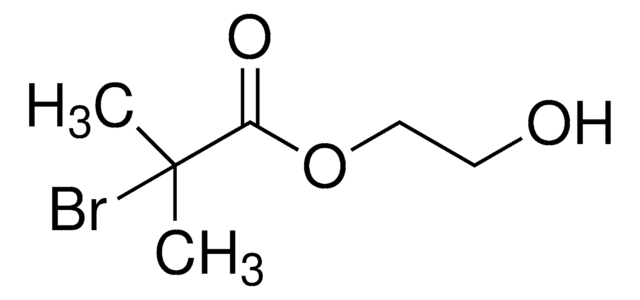723142
Tris[2-(dimethylamino)ethyl]amine
97%
Synonym(s):
Me6TREN
About This Item
Recommended Products
Quality Level
Assay
97%
form
liquid
refractive index
n20/D 1.455
density
0.862 g/mL at 25 °C
SMILES string
CN(C)CCN(CCN(C)C)CCN(C)C
InChI
1S/C12H30N4/c1-13(2)7-10-16(11-8-14(3)4)12-9-15(5)6/h7-12H2,1-6H3
InChI key
VMGSQCIDWAUGLQ-UHFFFAOYSA-N
Related Categories
General description
Application
Signal Word
Danger
Hazard Statements
Precautionary Statements
Hazard Classifications
Eye Dam. 1 - Skin Corr. 1B
Storage Class Code
8A - Combustible corrosive hazardous materials
WGK
WGK 3
Flash Point(F)
219.9 °F - closed cup
Flash Point(C)
104.4 °C - closed cup
Choose from one of the most recent versions:
Already Own This Product?
Find documentation for the products that you have recently purchased in the Document Library.
Customers Also Viewed
Articles
ATRP is a successful method for precise polymer synthesis with controlled molecular weights and high chain end functionalities.
Micro review of reversible addition/fragmentation chain transfer (RAFT) polymerization.
Protocols
We present an article about RAFT, or Reversible Addition/Fragmentation Chain Transfer, which is a form of living radical polymerization.
We presents an article featuring procedures that describe polymerization of methyl methacrylate and vinyl acetate homopolymers and a block copolymer as performed by researchers at CSIRO.
Polymerization via ATRP procedures demonstrated by Prof. Dave Haddleton's research group at the University of Warwick.
Our team of scientists has experience in all areas of research including Life Science, Material Science, Chemical Synthesis, Chromatography, Analytical and many others.
Contact Technical Service







![Tris[2-(methylamino)ethyl]amine 97%](/deepweb/assets/sigmaaldrich/product/structures/217/368/3e89e134-669e-4a03-9a34-f97b50399bb2/640/3e89e134-669e-4a03-9a34-f97b50399bb2.png)






